Generational Differences During Young Adulthood: Baby Boomers vs Millennials
Family Profile No. 06, 2017
Author: Lydia R. Anderson
The demographic composition of the Baby Boomer* versus the Millennial* generations has long been of interest to policy makers and scholars alike. This profile explores the "generation gap" (Taylor, 2016) between the two by examining the demographic characteristics of early members in each generation from the ages of 25-34 using data from the 1980 Decennial Census (Baby Boomers) and the 2015 American Community Survey (Millennials).
*Note: The terms Baby Boomer and Millennial throughout this profile represent early members of each generation.

Racial and Ethnic Composition
- Millennials are more racially and ethnically diverse than Baby Boomers, with larger proportions of Black, Hispanic, Asian, and Other racial categories.
- In 1980, 79% of Baby Boomers were White compared to 57% of Millennials in 2015.
Figure 1. Racial and Ethnic Composition of Baby Boomers (1980) and Millennials (2015) Aged 25-34, 2015
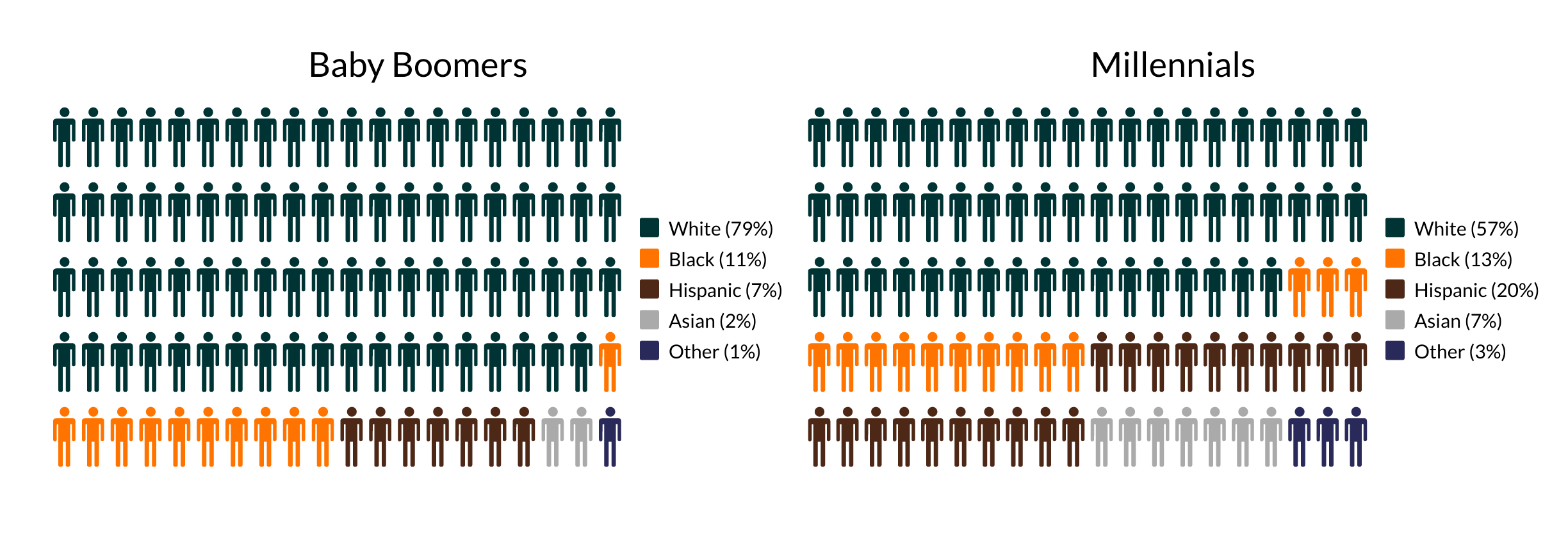
Nativity Status
- The percentage of the population aged 25-34 who were foreign born more than doubled between the Baby Boomer and Millennial generations.
- The percentage increased from 7.5% in 1980 to 17.5% in 2015.
Figure 2. Nativity Status of Baby Boomers (1980) and Millennials (2015) Aged 25-34, 2015
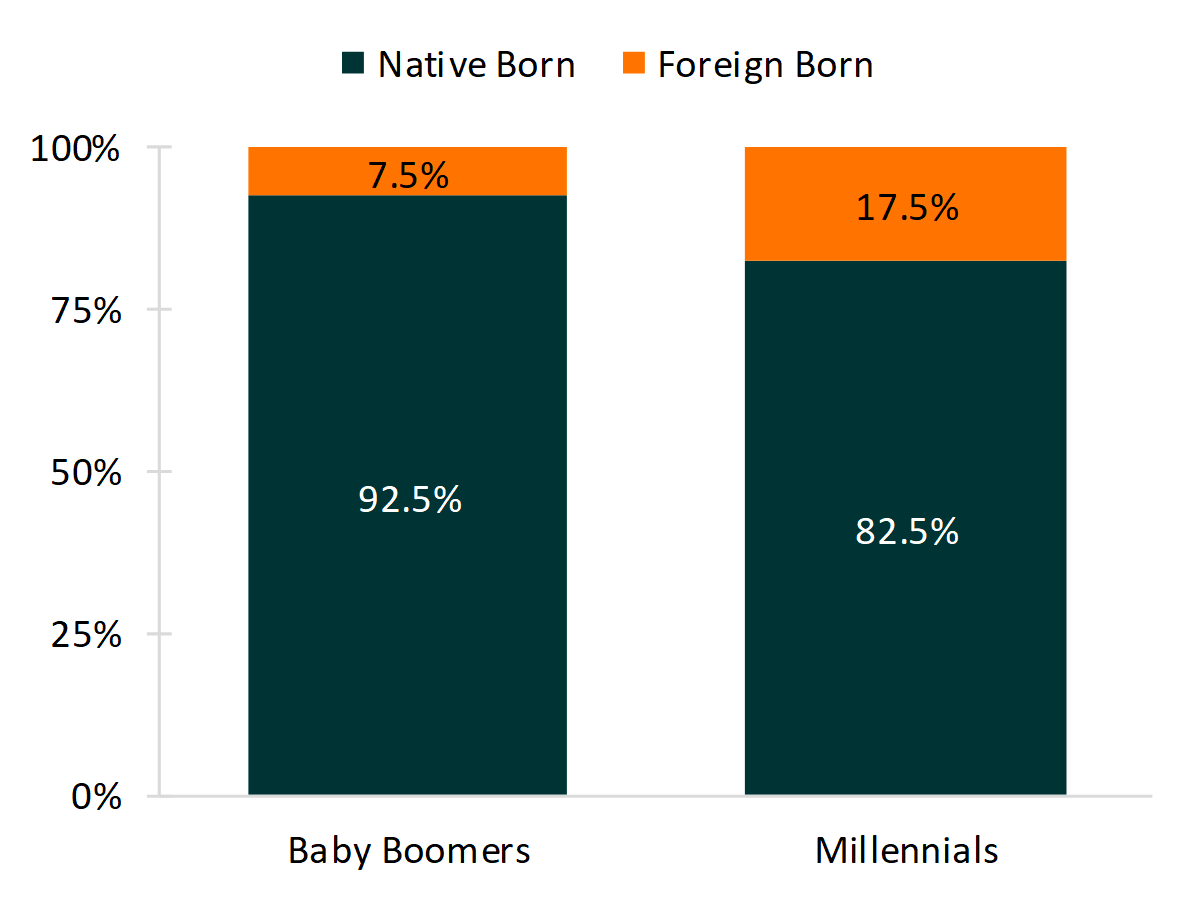
Educational Attainment
- Millennials were more educated than Baby Boomers at the same age.
- The proportion with less than a high school education decreased between the two generations, whereas the proportion with a Bachelor's degree or higher increased.
- In 1980, the modal educational category for 25-34-year olds was a high school diploma or equivalent. By comparison, in 2015, the modal educational category was a Bachelor's degree or higher.
Figure 3. Educational Attainment of Baby Boomers (1980) and Millennials (2015) Aged 25-34
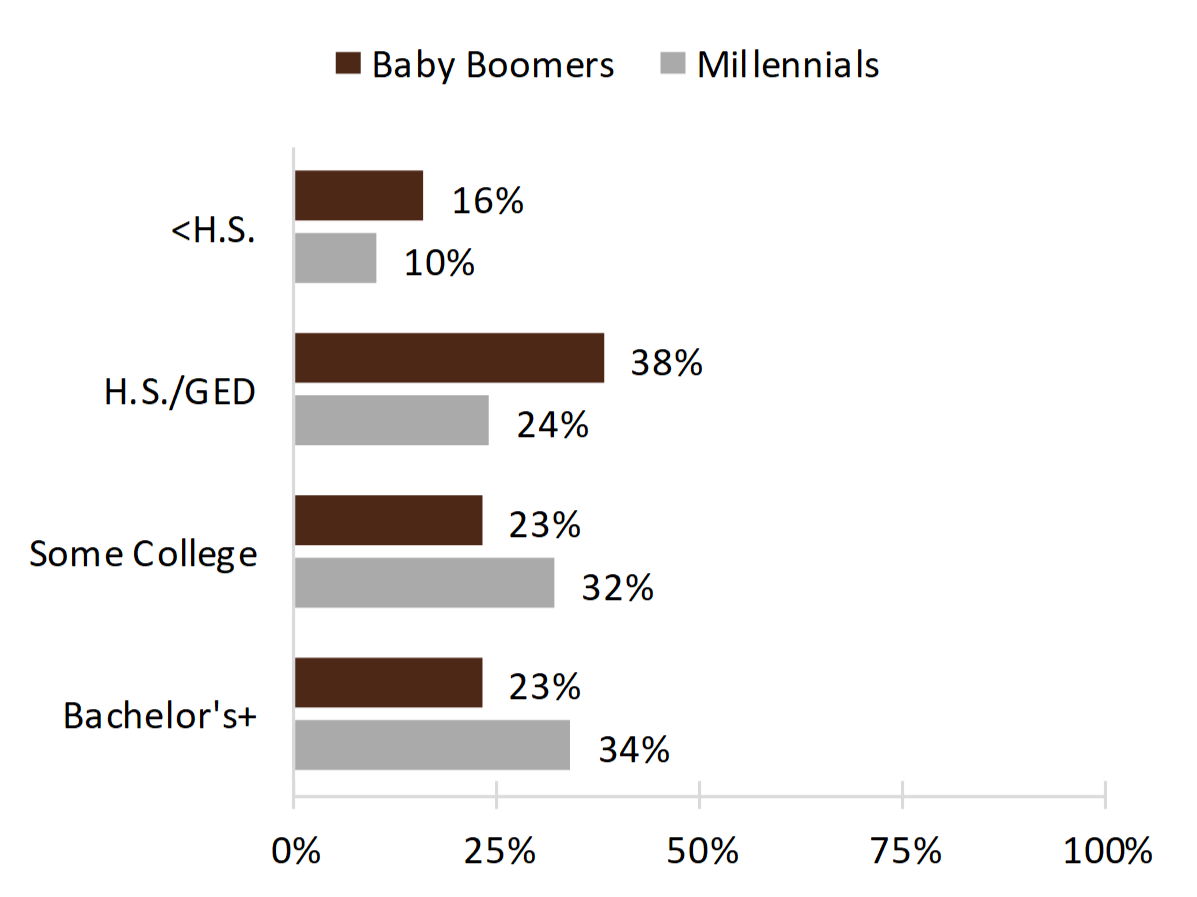
Region of Residence
- The largest share of young adult Baby Boomers and Millennials lived in the South. Further, the overall share living in the South increased between the two periods.
- An increasing proportion of Millennials lived in the West compared to Baby Boomers.
- Decreasing proportions of Millennials lived in the Northeast and Midwest compared to Baby Boomers at the same age.
Figure 4. Region of Residence of Baby Boomers (1980) and Millennials (2015) Aged 25-34
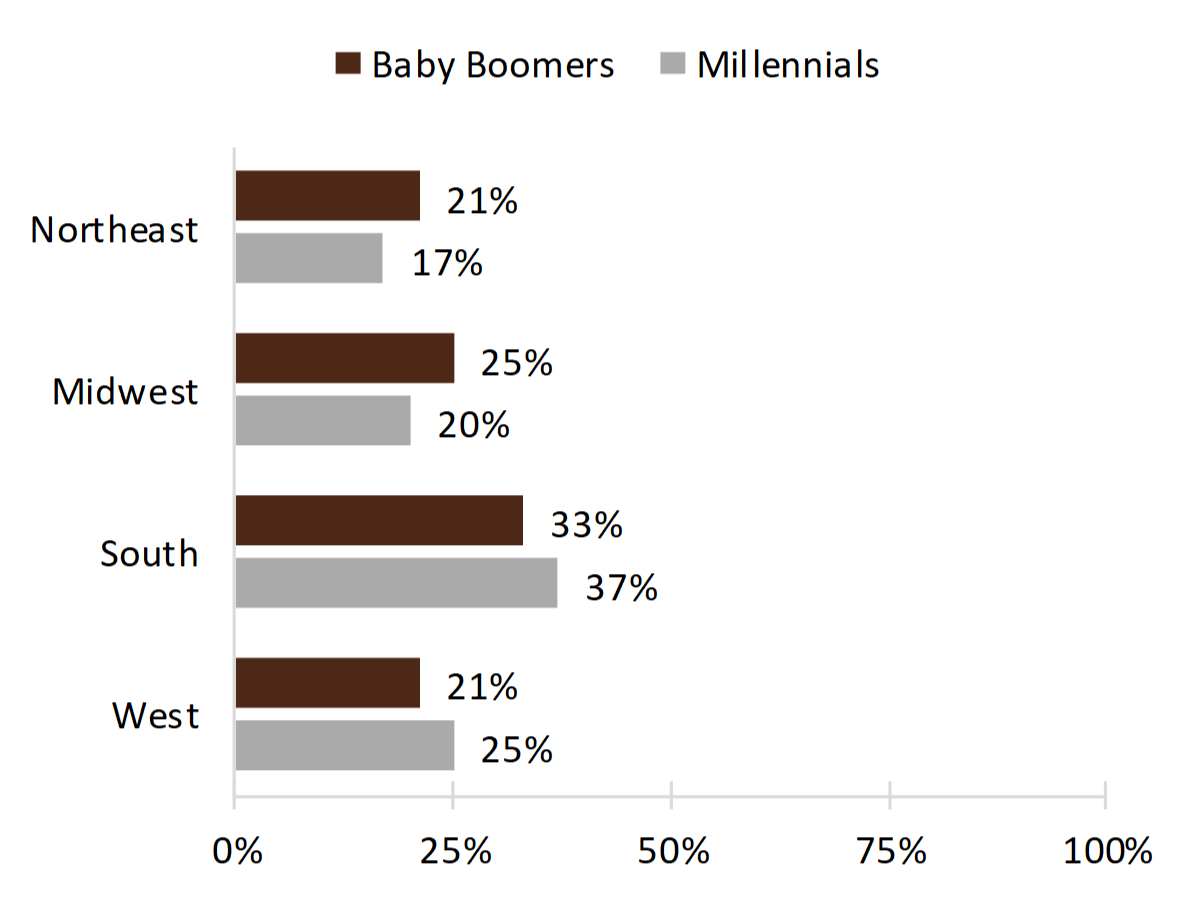
At Work in the Past Week
- The majority of young adult Baby Boomers and Millennials were working in the past week.
- Among both groups, around 20% were not in the labor force (not shown).
Figure 5. Those Working Last Week Among Baby Boomers (1980) and Millennials (2015) Aged 25-34
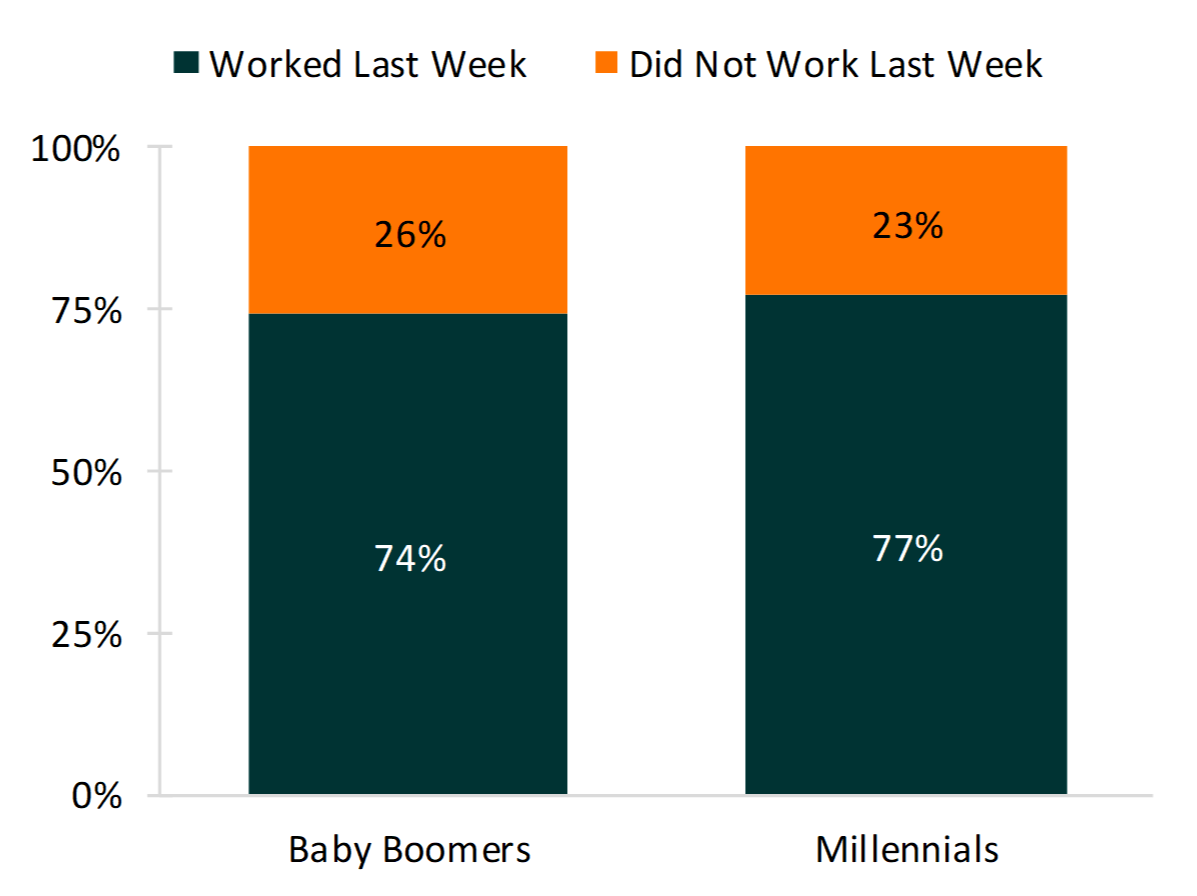
References
- Taylor, P. (2016). The next America: Boomers, Millennials, and the looming generational showdown. New York, NY: Public Affairs.
- Ruggles, S., Genadek, K., Goeken, R., Grover, J., & Sobek, M. (2015). Integrated Public Use Microdata Series: Version 6.0 [dataset]. Minneapolis: University of Minnesota. http://doi.org110.181281D01 0.V6.0
Suggested Citation
- Anderson, L. (2017). Generational differences during young adulthood: Baby Boomers vs. Millennials. Family Profiles, FP-17-06. Bowling Green, OH: National Center for Family & Marriage Research. http://www.bgsu.edu/ncfmr/resources/data/family-profiles/anderson-demographics-baby-boomers-millennials-fp-17-06.html

This project is supported with assistance from Bowling Green State University. From 2007 to 2013, support was also provided by the U.S. Department of Health and Human Services, Office of the Assistant Secretary for Planning and Evaluation. The opinions and conclusions expressed herein are solely those of the author(s) and should not be construed as representing the opinions or policy of any agency of the state or federal government.
Updated: 04/06/2021 02:04PM

